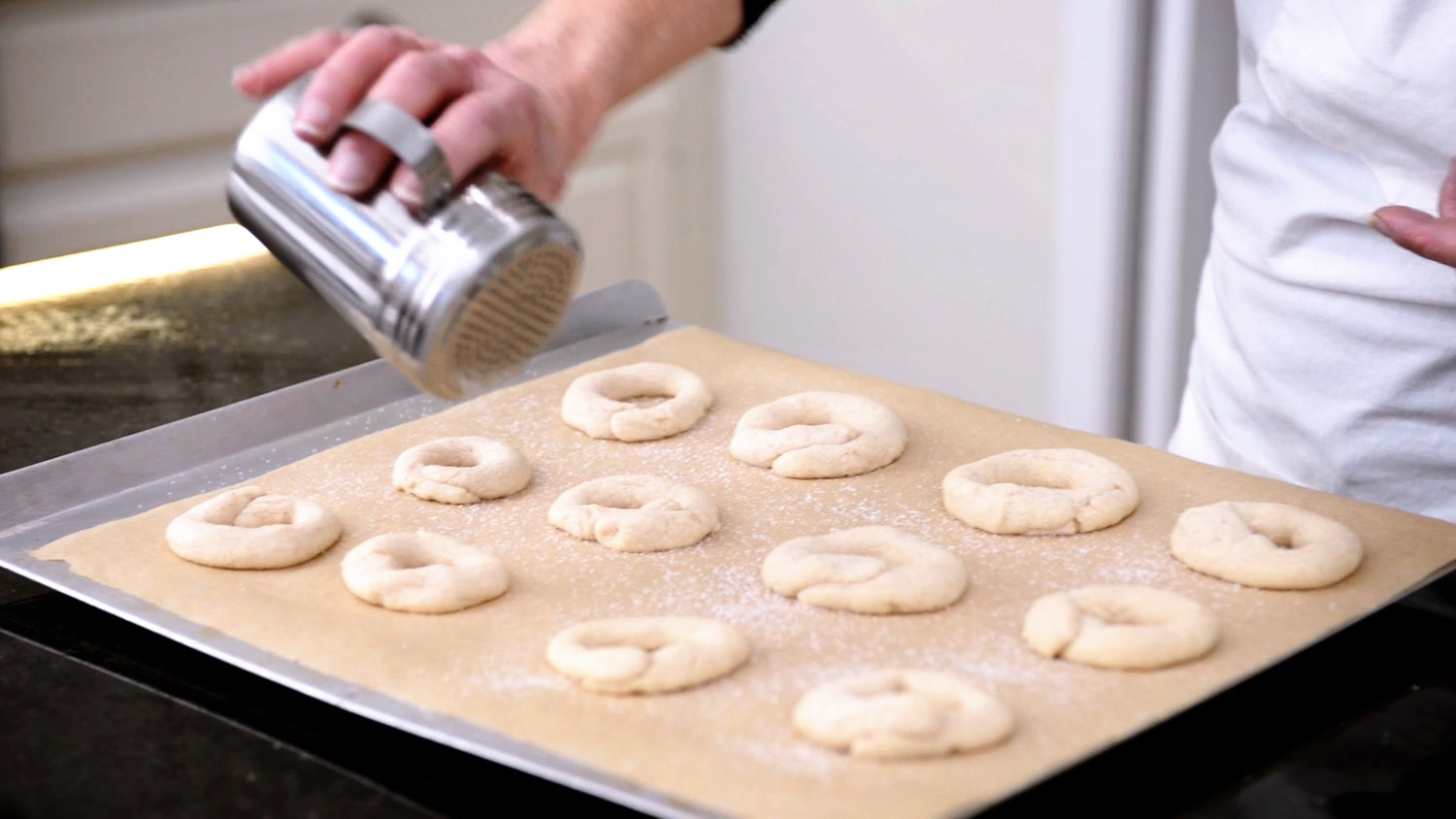Brown Sugar Cookies
Jan 30, 2023 | By: Becky Diamond
White sugar is sugar in its most refined form. Historically, it has been the most desirable for baked goods, and therefore the most expensive. Brown sugar was typically lower in price and coarser grained, taking its color, flavor and texture from molasses syrup present during the refining process. As Mary Lincoln explains her 1886 book, Mrs. Lincoln's Boston Cook Book: What to Do and what Not to Do in Cooking, “granulated sugar is brown sugar refined and re-crystallized. All brown and moist sugars are inferior in quality; they contain water and mineral matter … loaf sugar is the purest.” This moisture is what gives brown sugar its tendency to clump and also create baked goods that are softer, moister and denser.
The difference between light (yellow) and dark brown sugar is that the darker variety contains of the refining syrup. With its deeper color and stronger molasses flavor, dark brown sugar was (and still is) used to sweeten full flavored baked goods such as gingerbread, mincemeat and fruit cake. Light brown sugar lends itself more readily to lighter baked goods such as cookies and butterscotch and other candies.
According to the Cook’s Illustrated book The Science of Good Cooking, modern brown sugar is usually made from granulated sugar with the addition of molasses – 6.5% for dark or 3.5% for light. Some natural brown sugars, such as Demerara and turbinado, are derived from sugar cane, but they are slightly less processed and thus retain a gentle molasses flavor and larger crystal size.
Scanning through Victorian-era cookbooks, I was intrigued to see several cookie varieties labeled simply “Brown Sugar Cookies” and was curious how they would compare to modern sugar cookies. To make my adapted version, I ended up taking bits and pieces of a combination of recipes from The “home Queen” World’s Fair Souvenir Cook Book (1893), Berea Cook Book (1897) and The A.A. Cook Book: Containing Three Hundred Tested Recipes (1895).
I first came up with a recipe that used flour, butter, one egg, ginger, salt and regular light brown sugar. I rolled out the dough thin (as the recipe suggested) and cut the cookie into shapes. The result was a cookie that looked similar to a regular sugar cookie, but it was denser and chewier since the brown sugar contains more moisture than white. The cookies were also thinner and spread a bit more since I did not use a rising agent. They were good, but I thought I would do some more testing.
So I tried again using Demerara sugar instead of regular brown since I thought this would likely be more similar to what cooks would have used in the nineteenth century. When I tried to cream it with the butter, it was drier than the last recipe, even after adding an egg, so I added another egg, which helped achieve a creamy texture. I also added a teaspoon of baking soda this time for some leavening. All the other measurements and ingredients were the same. The dough was easy to work with, but it felt crunchy from the coarse Demerara sugar, again different than regular sugar cookies. I ended up rolling out some of the dough and making some as cut-out cookies, and shaped the remainder of the dough into 1-inch balls and rolled in Demerara sugar (like molasses crinkles) before baking. The rolled out cookies were thinner and crispier, and the round cookies were chewier and soft in the middle (I think I liked these better). But both were delicious, with a delightful crunch and slight toffee flavor from the Demerara sugar – my “taste-testers” agreed! Bake them whichever way you please (both methods are listed here). Enjoy!
Brown Sugar Cookies
1/2 cup (1 stick) unsalted butter, softened
1 cup Demerara sugar
2 eggs
2 ¼ cups all-purpose flour
1 teaspoon baking soda
1 teaspoon ginger
½ teaspoon salt
Preheat oven to 400°F.
Using an electric mixer, cream butter and sugar on medium high speed until well blended. Mix in the eggs.
Sift flour, baking soda, ginger and salt together in a separate bowl. Add to wet ingredients and mix until well combined.
Shape dough into a ball and roll out onto a floured board and cut into shapes with a cookie cutter. Or scoop dough into walnut-sized balls and roll in Demerara sugar. Add flour in small increments if dough seems sticky.
Place 2 inches apart on baking sheets and bake for 8–10 minutes. Cool on a wire rack.






Leave a comment
0 Comments